General information about ADHD
In these sections the user will be able to access information about ADHD, its repercussions, the available medications and the adverse effects they produce. We hope that this information will be useful in deciding on ADHD treatment preferences.
Symptoms of ADHD
People with ADHD have symptoms of inattention and/or hyperactivity and impulsivity. Some patients show both types of symptoms, while others have only one type. ADHD symptoms include making careless mistakes, having difficulty sustaining attention, having difficulty completing tasks or obligations, being easily distracted, having trouble organizing and planning, losing objects, being constantly on the go and running, walking or climbing in places where it is not considered appropriate to do so. They often feel restless, talk excessively, are unable to wait and interrupt others. The more severe the symptoms, the more they interfere with the person’s ability to function day-to-day.
What are symptoms?
Illnesses or disorders show symptoms. In the case of ADHD, these symptoms hinder the person’s development and ability to function fully. ADHD symptoms are grouped into two categories: those associated with inattention and hyperactivity, and those associated with impulsivity. Some patients have both groups of symptoms; others only a subgroup.
What are the symptoms of ADHD?
Someone with ADHD may show some or all of the following signs and symptoms:
- lacking attention to detail
- making careless mistakes at school or work
- having difficulty maintaining attention while doing an activity such as playing, reading, or listening to a conversation
- unable to listen when spoken to
- having difficulty following instructions, and completing tasks or obligations.
- having difficulty completing tasks once started as they are easily distracted
- having trouble:
-organizing tasks that require a sequence of actions
-keeping objects and belongings in order
-keeping work organized
-completing tasks on time
- avoiding doing tasks that require sustained mental effort
- loss of objects needed to do homework or other activities such as school supplies, wallet, keys, glasses, or mobile phone.
- being easily distracted by thoughts or stimuli not related to the activity in hand
- forgetting to do everyday tasks such as keeping appointments or returning calls
Someone with ADHD may show the following symptoms of hyperactivity and impulsivity:
- being unable to sit still
- getting up and walking around at times and in places they are expected to remain seated, such as in the classroom or office
- running, walking or climbing in inappropriate places
- often feeling restless
- being constantly on the move, wandering around or acting as if “driven by a motor “
- talking excessively
- giving answers before questions have been completed or being unable to wait their turn in the conversation
- unable to wait their turn
- interrupting others or intruding in their conversations, games, or activities
These symptoms can be measured using scales administered by patients, parents, teachers or clinicians.
The more severe the symptoms are, the more the patient’s daily life will be affected by them.
Do you need to make a clinical decision?
EVIMATIC® is the first digital health tool that generates decentralized, automated, personalized, participatory and explanatory treatment recommendations that are presented in the format of clinical practice guidelines.
Do you need to make a clinical decision?
EVIMATIC® is the first digital health tool that generates decentralized, automated, personalized, participatory and explanatory treatment recommendations that are presented in the format of clinical practice guidelines.













